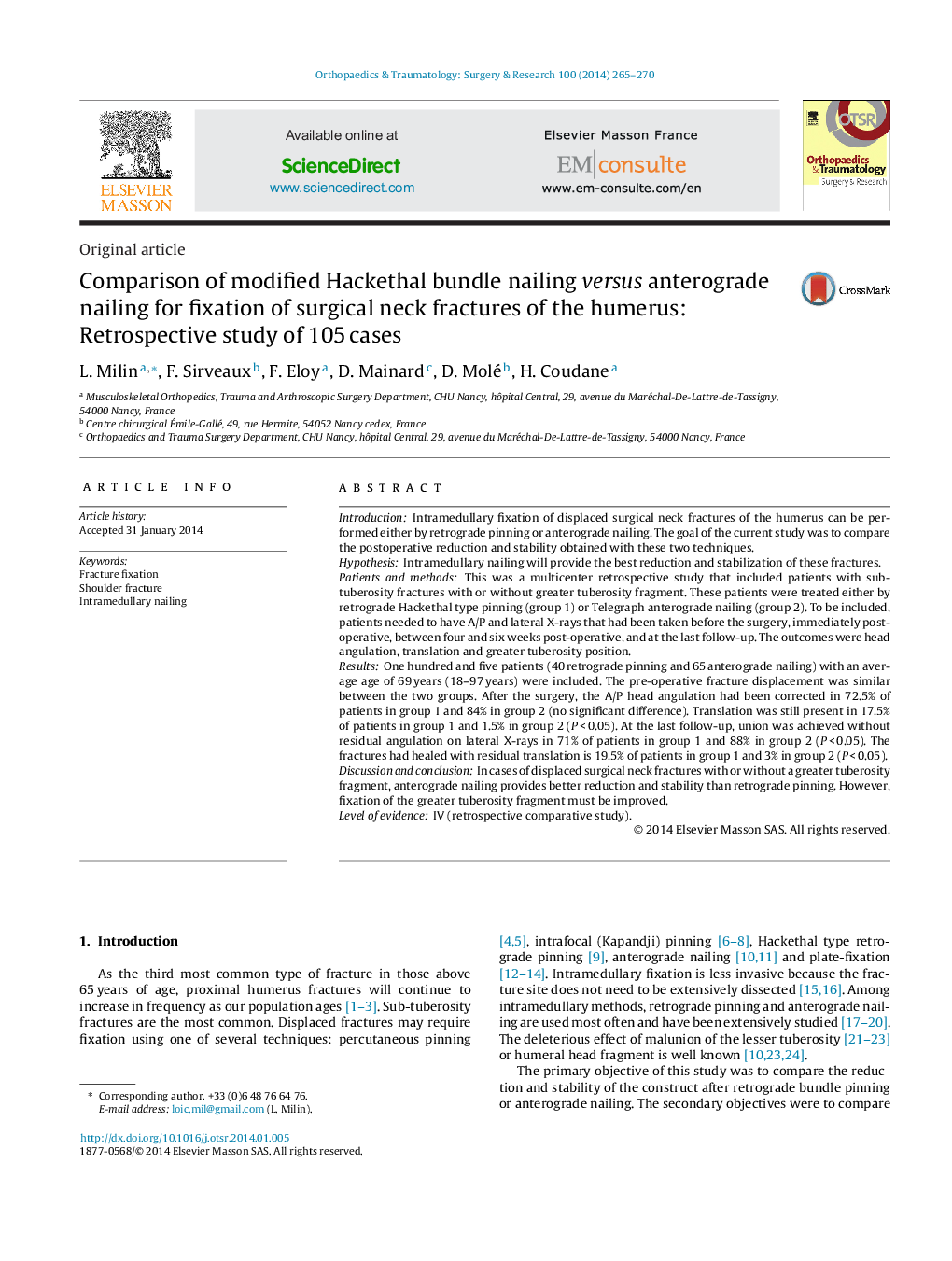| Article ID | Journal | Published Year | Pages | File Type |
|---|---|---|---|---|
| 4081540 | Orthopaedics & Traumatology: Surgery & Research | 2014 | 6 Pages |
IntroductionIntramedullary fixation of displaced surgical neck fractures of the humerus can be performed either by retrograde pinning or anterograde nailing. The goal of the current study was to compare the postoperative reduction and stability obtained with these two techniques.HypothesisIntramedullary nailing will provide the best reduction and stabilization of these fractures.Patients and methodsThis was a multicenter retrospective study that included patients with sub-tuberosity fractures with or without greater tuberosity fragment. These patients were treated either by retrograde Hackethal type pinning (group 1) or Telegraph anterograde nailing (group 2). To be included, patients needed to have A/P and lateral X-rays that had been taken before the surgery, immediately post-operative, between four and six weeks post-operative, and at the last follow-up. The outcomes were head angulation, translation and greater tuberosity position.ResultsOne hundred and five patients (40 retrograde pinning and 65 anterograde nailing) with an average age of 69 years (18–97 years) were included. The pre-operative fracture displacement was similar between the two groups. After the surgery, the A/P head angulation had been corrected in 72.5% of patients in group 1 and 84% in group 2 (no significant difference). Translation was still present in 17.5% of patients in group 1 and 1.5% in group 2 (P < 0.05). At the last follow-up, union was achieved without residual angulation on lateral X-rays in 71% of patients in group 1 and 88% in group 2 (P < 0.05). The fractures had healed with residual translation is 19.5% of patients in group 1 and 3% in group 2 (P < 0.05).Discussion and conclusionIn cases of displaced surgical neck fractures with or without a greater tuberosity fragment, anterograde nailing provides better reduction and stability than retrograde pinning. However, fixation of the greater tuberosity fragment must be improved.Level of evidenceIV (retrospective comparative study).
